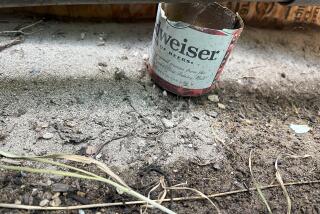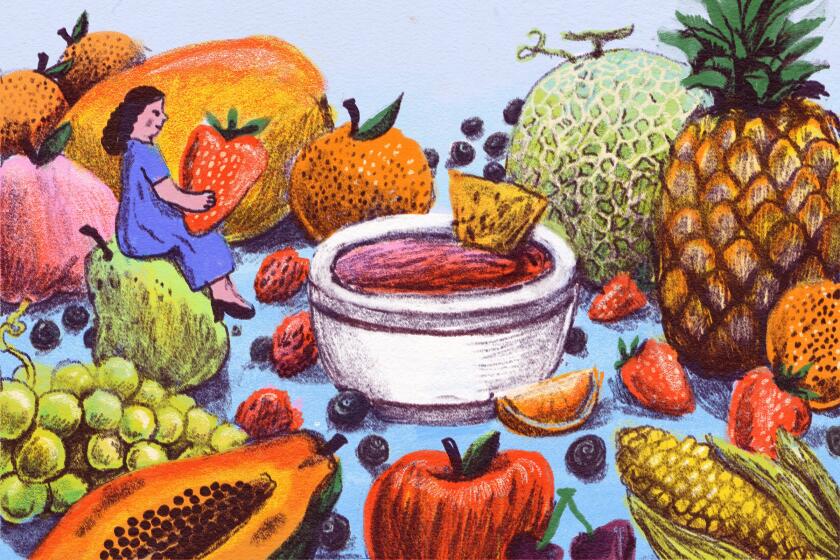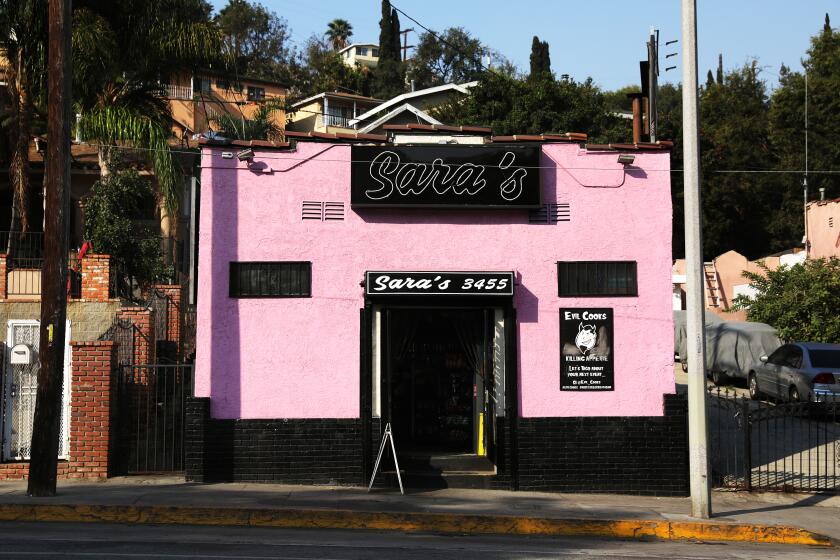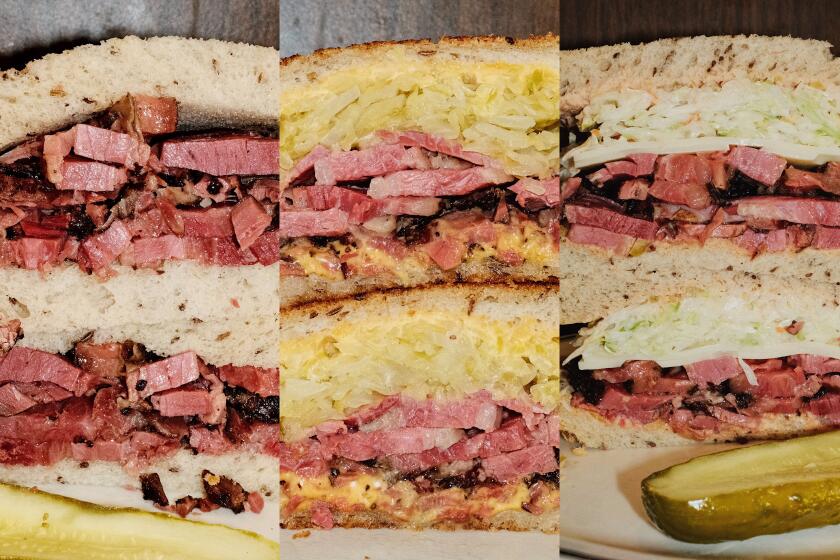Market Watch: Asparagus from the San Joaquin Delta
Eye-level with the ground at Zuckerman’s Farm, west of Lodi in the San Joaquin Delta, the thousands of asparagus spears jutting out of the black peat soil look like creatures on an alien planet. In fact, the whole area — rimmed by levees, crisscrossed by canals and home to countless waterfowl — seems foreign to California. But for quality and quantity, this is the top asparagus-growing district in the state and the nation, and the last bastion of a traditional crop that has largely succumbed to lower-priced imports.
The asparagus harvest is remarkably low-tech and labor-intensive. Sometimes starting before dawn, by the light of the moon, workers walk the furrowed rows with a special forked knife in one hand, bending low to sever the spears at the base with a quick jab. In the other hand they gently cradle the harvested stalks, depositing them in a pile at the end of the rows, to be picked up by other workers.
“This is an awesome field,” says Roscoe Zuckerman, whose family has farmed asparagus in the area since the 1930s. “People have no clue about how asparagus grows.”
He pushes away the soil from the base of a plant, revealing ranks of white spears preparing to emerge. Only when the stalks peep above the ground and encounter the sun do they develop chlorophyll and turn green. The soil is so rich in organic matter that Zuckerman doesn’t need to fertilize at all, he says.
Asparagus, the growing shoot of a member of the lily family, is available year-round from coastal districts at farmers markets, but these generally don’t compare in quality with spring-grown stalks from the delta. Cutting the stalks year-round drains carbohydrates from the crown, the bulb-like base from which the shoots emerge, and causes them to be thin, with loose, feathery heads, fibrous texture and grassy flavor.
Zuckerman starts harvesting in late February and finishes in June, when it gets so hot that the plants start to bolt, developing their natural fern-like foliage. Letting them go to fern allows the plants to carry out photosynthesis and accumulate reserves of nutrients, so that the next year’s spears are naturally fatter, sweeter, juicier and smoother-textured, with a richer asparagus flavor and tighter heads.
“The bracts [leafy tops] on the Zuckerman heads are smooth and tight without any nascent fronds pushing out,” says Karen Beverlin, farmers market buyer for FreshPoint and a keen judge of fine produce. “When I select asparagus, I look at the head.”
Zuckerman’s grandfather left Oklahoma between the world wars for Los Angeles, where he and two brothers established a produce company. He ventured north to the delta to buy potatoes, fell in love with the land and started farming. At peak he and his family grew 5,000 acres of asparagus, originally all white asparagus, covered with soil while it grew to prevent the exposure to light that causes the development of green chlorophyll. When their Japanese workers were interned during World War II and labor availability tightened, they switched to growing green asparagus.
Zuckerman, now 57, has faced another major turning point over the last two decades, as low-priced imports from Mexico and Peru have undercut his wholesale margins
“There is no way we can compete with them, because their labor is paid less than $10 a day,” says Armando Lopez, his foreman.
Although United States per capita consumption of asparagus has more than doubled since 1990, from 0.6 to 1.4 pounds annually, imports have increased from 44 million to 377 million pounds. The share of U.S. consumption derived from imports has increased from 30% to 87% during that period, while domestic acreage has declined from almost 100,000 acres to 28,000. California currently has 11,000 acres to cut, almost two-thirds of which are in the San Joaquin Delta near Stockton and Lodi.
Starting in the 1990s, Zuckerman turned to farmers markets, which now take about 40% of his asparagus crop. So far this season, with Mexican imports flooding the market, wholesale prices, $18 to $28 for a 28-pound crate, have been below his cost of production, $30. So far he has harvested chiefly for farmers markets, where he can still make money selling directly to consumers, at $3 to $5 per bunch. Later in the season, as imports decline and his production increases, he jumps into the wholesale market.
Each week he sends two or three loads south by truck to Southern California farmers markets, selling at more than a dozen venues, including Santa Monica, Hollywood, Studio City, Encino, Pasadena, Irvine and Corona del Mar.
Most of his crop is a University of California hybrid variety called UC 157, which offers both high yields and quality. He also grows limited quantities of Viola, a purple cultivar that is less productive but has an even sweeter flavor reminiscent of snap peas.
Whatever the color, Zuckerman prefers thicker spears, which are more tender and less fibrous. They’re perfect coated with olive oil and roasted, which leaves them firmer, nuttier and sweeter than steaming.
More to Read
Eat your way across L.A.
Get our weekly Tasting Notes newsletter for reviews, news and more.
You may occasionally receive promotional content from the Los Angeles Times.










